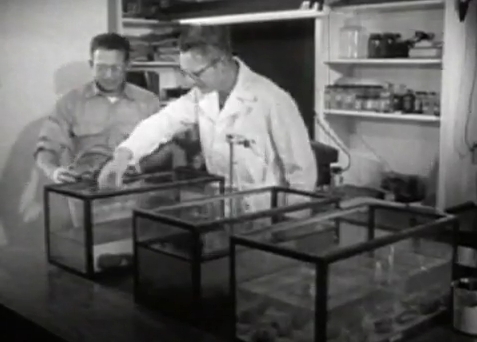The oil drilling and oyster industries both extract things from coastal waters, so it’s no surprise they’ve been interacting for decades. Here’s a cheesy 1960 video from the American Petroleum Institute that gives a fun look into that relationship, and the industry-funded science that keeps it humming:
I don’t know the full background, but Louisiana oyster harvesters claimed that offshore drilling was sickening oysters. The API responded with $2 million worth of research into oyster health — they pumped oil into a tank of oysters, poured in drilling mud, even measured the effect of dynamite charges on oysters.
“Every possibility was explored,” the narrator reports. “After years of study and progress, the results were in: The test oysters showed no ill effects from oil.”
So what was sickening the oysters? A fungus, according to the oil-industry group. “It was further found that natural changes in the Gulf Coast, and man-made improvements such as levees, together with climatic changes were seriously affecting the proper mixture of fresh and salt water in the oyster bedding grounds.”
(Apparently the group believed in “climatic changes” back then, before word got out that oil burning was causing it.)
API also explained why it spent $2 million on oyster research: “It’s because oil companies believe that maintaining good neighbors is just good business.”
Turns out destroying nearby industries is bad PR. Hear that, BP?




